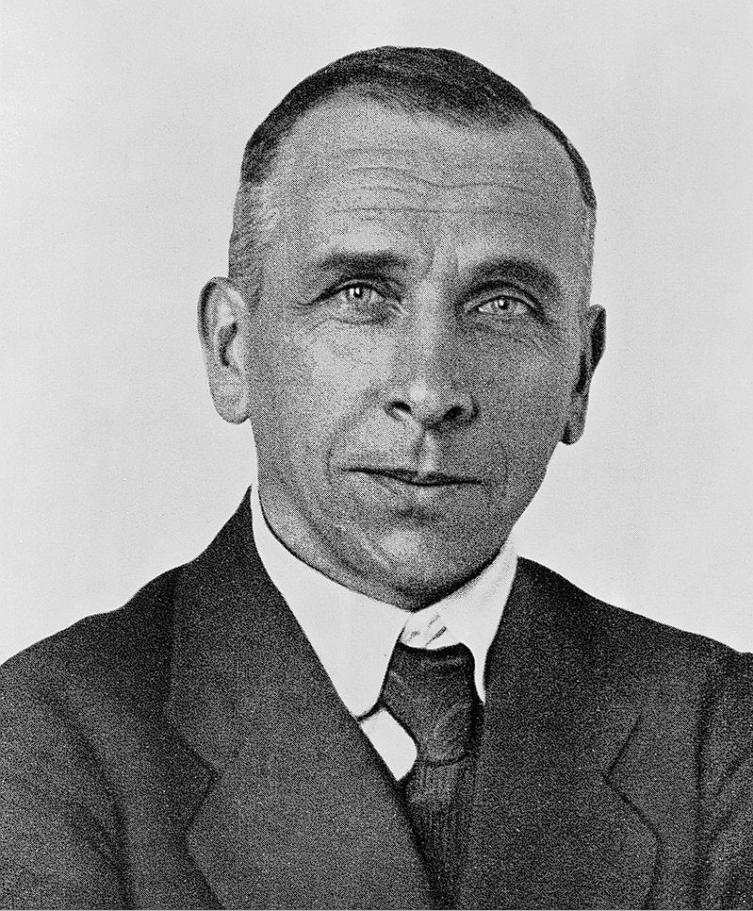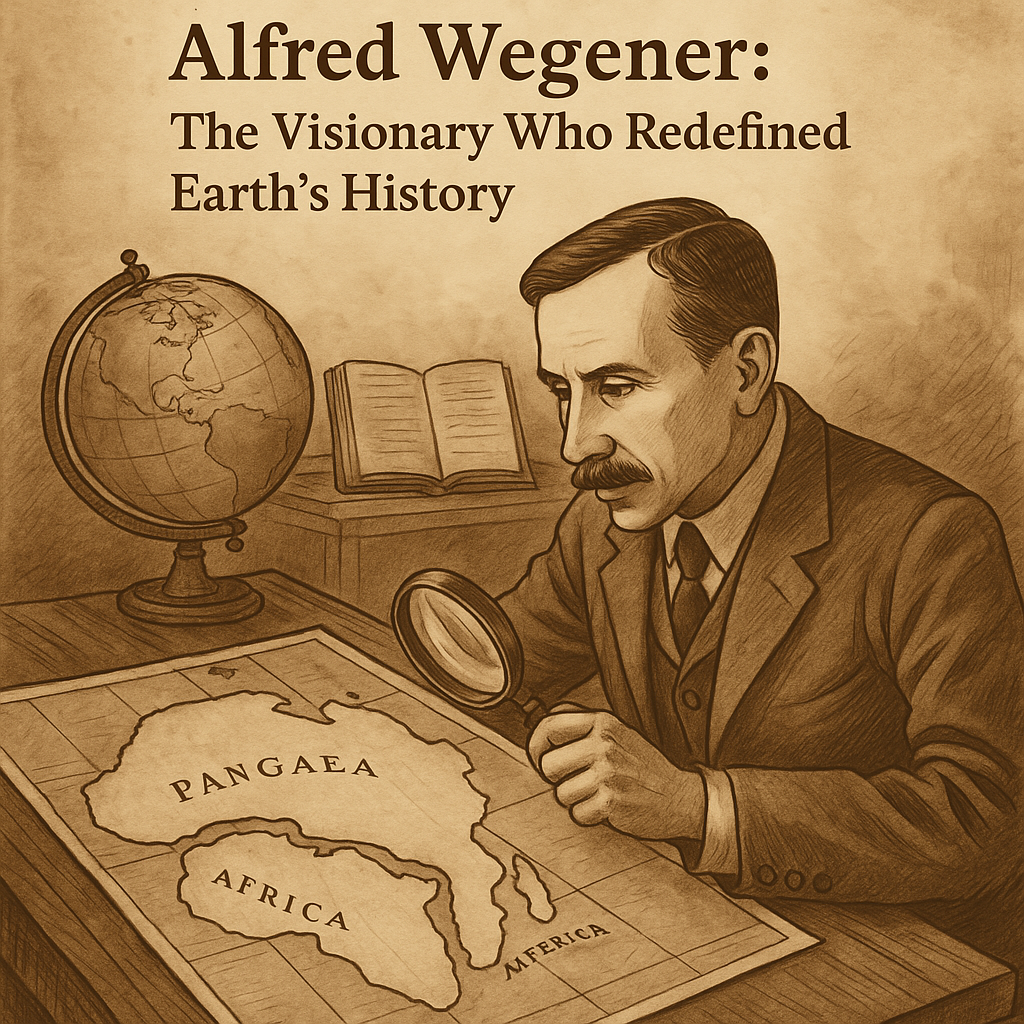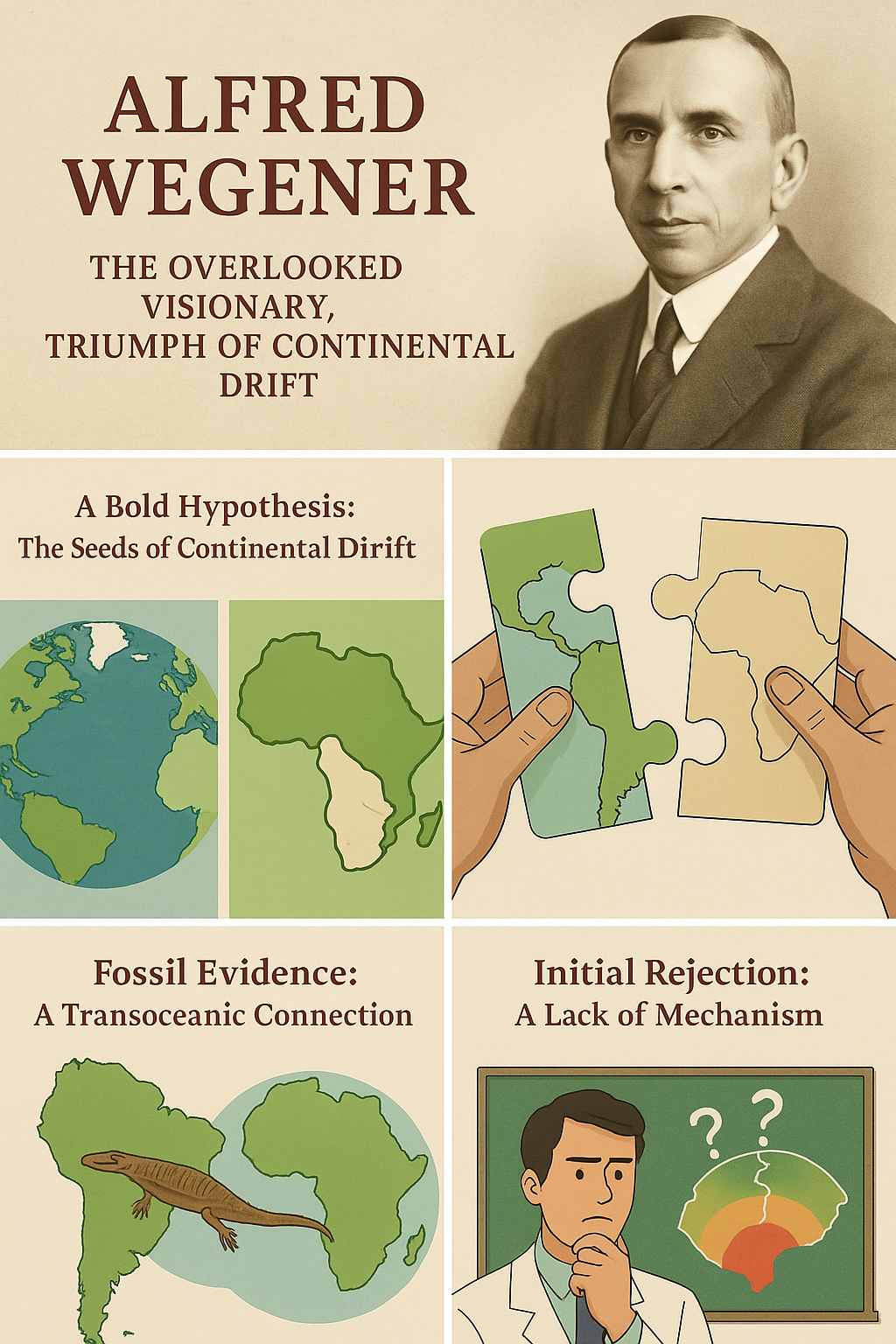In 1912, a German scientist named Alfred Wegener proposed a radical idea: that continents were not fixed, but drifting slowly across the Earth’s surface. His theory, called continental drift, was met with disbelief and ridicule. Yet decades later, his insight would form the foundation of modern plate tectonics, transforming how we understand our planet.

The Puzzle-Like Fit: A Striking Observation
Wegener was not a geologist by training, but a meteorologist and polar researcher. Still, he noticed something extraordinary: the coastlines of Africa and South America appeared to fit together like puzzle pieces.
“The congruence of the coastlines of the Atlantic is too perfect to be a coincidence,” he wrote in The Origin of Continents and Oceans (1915).
But Wegener didn’t stop at shape. He compared geological structures and discovered matching mountain ranges on both continents. To him, this was more than coincidence—it was evidence of a shared past.
Fossils Across Oceans: A Living Link
Wegener strengthened his argument with fossil evidence. He found that identical species of plants and animals—like the freshwater reptile Mesosaurus—were discovered on continents now separated by vast oceans.
These ancient fossils told a story of a once-connected world, where species roamed freely across what are now separate continents. The biological distribution made no sense unless the continents had once been joined.

Scientific Rejection: No Mechanism, No Acceptance
Despite his compelling evidence, Wegener’s theory faced intense criticism. The main problem? He couldn’t explain how continents moved.
At the time, most scientists believed the Earth’s crust was too rigid for movement. Wegener suggested that continents “plowed” through oceanic crust, but he couldn’t identify the force responsible.
To the scientific community, without a mechanism, continental drift was no more than speculation.
Vindication After Death: The Rise of Plate Tectonics
Wegener died in 1930 during an expedition to Greenland, never knowing that he was right. In the 1960s, new discoveries in ocean floor mapping and seafloor spreading revealed the mechanism he lacked.
Scientists discovered mid-ocean ridges and subduction zones, proving that Earth’s crust was broken into plates that moved over a fluid mantle.
This was the birth of plate tectonics—a theory that not only supported Wegener’s ideas but expanded them. It explained earthquakes, volcanoes, mountain formation, and the shifting of continents.
A Legacy of Persistence and Vision

Wegener’s journey wasn’t just scientific—it was deeply human. He faced mockery, dismissal, and isolation. But he held firm to his vision.
“The truth often begins as heresy and ends as superstition,” he once said—a reflection of how revolutionary ideas often travel a hard road.
Today, Alfred Wegener is remembered not as a dreamer, but as a pioneer. His theory, once ignored, reshaped geology and earned its place in scientific history.
Conclusion: From Rejection to Revolution
The story of Alfred Wegener and continental drift is one of foresight, evidence, and perseverance. It reminds us that even the most radical ideas, if grounded in truth, can change the world.
